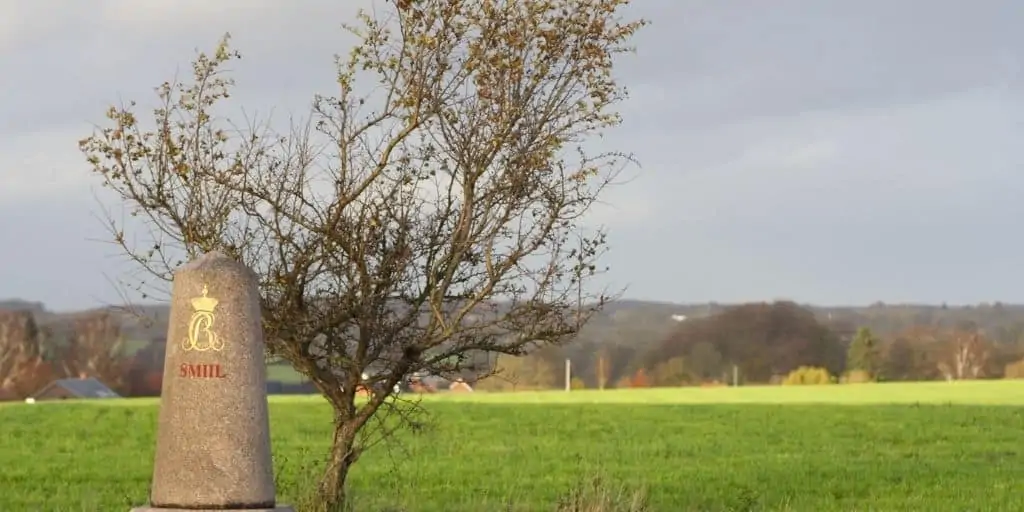What Are Metes and Bounds?
REtipster does not provide legal advice. The information in this article can be impacted by many unique variables. Always consult with a qualified legal professional before taking action.
How Do Metes and Bounds Work?
Metes and bounds constitute just one part of the legal description of a parcel of land. Because they are descriptive in nature, they can be considered accurate characterizations of that particular land[1].

Historically, “metes” referred to distance, and “bounds” referred to direction[2].
Landmarks have been used to identify property boundaries since ancient times, especially in Europe, where people had no concept of street addresses. Back then, metes and bounds were the most reliable way of recording the shape, size, location, and dimensions of property[3].
Even though the method is very old, metes and bounds paved the way for better land legislation and a better process for keeping track of ownership records[4]. This system is typically used for large properties where pinpoint accuracy is unnecessary or when describing irregularly shaped properties.
Which States Use the Metes and Bounds System?
In the United States, the usage of metes and bounds was largely replaced by the rectangular survey via the Land Ordinance of 1785[5]. Officially known as the Public Land Survey System (PLSS), the rectangular survey is a more modern way to plat or divide property for sale and settling.
Here are states that continue to use metes and bounds[6] in combination with (or sometimes in place of) the more modern expression:
- Connecticut.
- Delaware.
- Georgia.
- Kentucky.
- Maine.
- Maryland.
- Massachusetts.
- New Hampshire.
- New Jersey.
- New York.
- North Carolina.
- Pennsylvania.
- Rhode Island.
- South Carolina.
- Tennessee.
- Texas.
- Vermont.
- Virginia.
Some parts of Ohio also use the metes and bounds system.
Why Are Metes and Bounds Important?
Because of their descriptive nature in identifying a parcel of land, metes and bounds allow people to designate property lines and determine a value for that property based on its shape, size, location, and characteristics.
Metes and bounds are also important because of their inherent descriptiveness. For example, resolving property limit disputes will often require both parties to refer back to the legal description of the property, identified by the metes and bounds.
BY THE NUMBERS: Surveyors used to carry chains (measuring 66 feet long) and poles (16.5 feet high) to measure boundary lines. These units of measurement are still used today.
How Are Metes and Bounds Identified?
Metes and bounds are determined first by identifying markers or monuments, such as distinct rock formations or artificial structures like roads. In some cases, they can even be stakes placed by surveyors. These landmarks may be designated as starting or beginning points[7].
From there, they work their way around the property in a specific direction (known as a course), written in running prose as if the surveyor is walking through it. A sequence begins with a specific corner that serves as a marker and contains the direction, distance, and other boundaries that describe the land’s limits. A new sequence begins when a new direction changes the orientation.
These sequences are further broken down into parts such as “Sequence A,” “Sequence B,” and so on until they finally arrive back at the starting point and close the geographical expanse of the property.
RELATED: Legal Descriptions: How They Work and Why They Matter
What Are the Disadvantages of Metes and Bounds?
There are times when the given descriptions in metes and bounds may be ambiguous, inconsistent, or erroneous, especially when the landscape has changed[8]. Surveying this way may also be restricted by natural obstacles.
In cases where landmarks have disappeared or changed, municipalities and courts may step in to determine the exact boundaries and the intentions of the involved parties. They may use a ranking system to determine the reliability of landmarks used in a metes and bounds system if one or more landmarks are unreliable.
One such system is described below, in descending order of importance[9]:
- Natural landmarks.
- Artificial landmarks.
- Adjacent tracts or boundaries.
- Courses or directions.
- Distances.
- Area or quantity.
Even the direction of the property as determined by the metes and bounds system may not always be reliable. A magnetic compass is used to determine this direction, but these devices have varying degrees of precision due to the variability of Earth’s magnetic north[10].
BY THE NUMBERS: The magnetic north pole is offset by 500 kilometers from the geographic north pole.
Source: GIS Geography
Takeaways
Metes and bounds define property lines or a piece of land using landmarks, whether natural or artificial.
They were used in Europe since ancient times, and for a time in the United States, until it was largely replaced by the rectangular survey in 1785.
Metes and bounds can easily describe property limits, but because they have very little empirical basis, their landmarks can be easily changed or removed. In these cases, a court may intervene to delineate properties described by the deed or other relevant documents.
Sources
- Legal Information Institute. (n.d.) Metes and Bounds. Cornell Law School. Retrieved from https://www.law.cornell.edu/wex/metes_and_bounds
- Hanford Freund & Company. (n.d.) Metes and Bounds. Retrieved from http://www.hanfordfreund.com/real-estate-glossary-new/174-metes-and-bounds
- Yale Law Journal. (2019.) The Forgotten History of Metes and Bounds. Retrieved from https://www.yalelawjournal.org/article/the-forgotten-history-of-metes-and-bounds
- Farrell, A. (n.d.) Why the Legal Description is so Important in Land Surveys. PropLogix. Retrieved from https://www.proplogix.com/blog/why-the-legal-description-is-so-important-in-land-surveys
- Ohio History Central. (n.d.) Land Ordinance of 1785. Retrieved from https://ohiohistorycentral.org/w/Land_Ordinance_of_1785
- The Sidwell Company. (n.d.) The Public Land Survey System. Retrieved from https://www.sidwellco.com/company/resources/public-land-survey-system/
- SurveyHistory.org. (n.d.) Analysis of the System of United States Land Surveys. Retrieved from http://www.surveyhistory.org/metes_&_bounds_vs__public_lands.htm
- Jones, D. (2016.) Property problems can grow by metes and bounds. BizWest. Retrieved from https://bizwest.com/2016/05/17/property-problems-can-grow-metes-bounds/#
- Romero, A. (n.d.) How Land is Identified in a Deed. Dummies. Retrieved from https://www.dummies.com/education/law/how-land-is-identified-in-a-deed/
- Edwards, C. (2019.) Your compass is almost always wrong because Earth’s magnetic north pole is racing hundreds of miles off course. The Sun U.S. Retrieved from https://www.the-sun.com/lifestyle/tech-old/171415/your-compass-is-almost-always-wrong-because-earths-magnetic-north-pole-is-racing-hundreds-of-miles-off-course/






